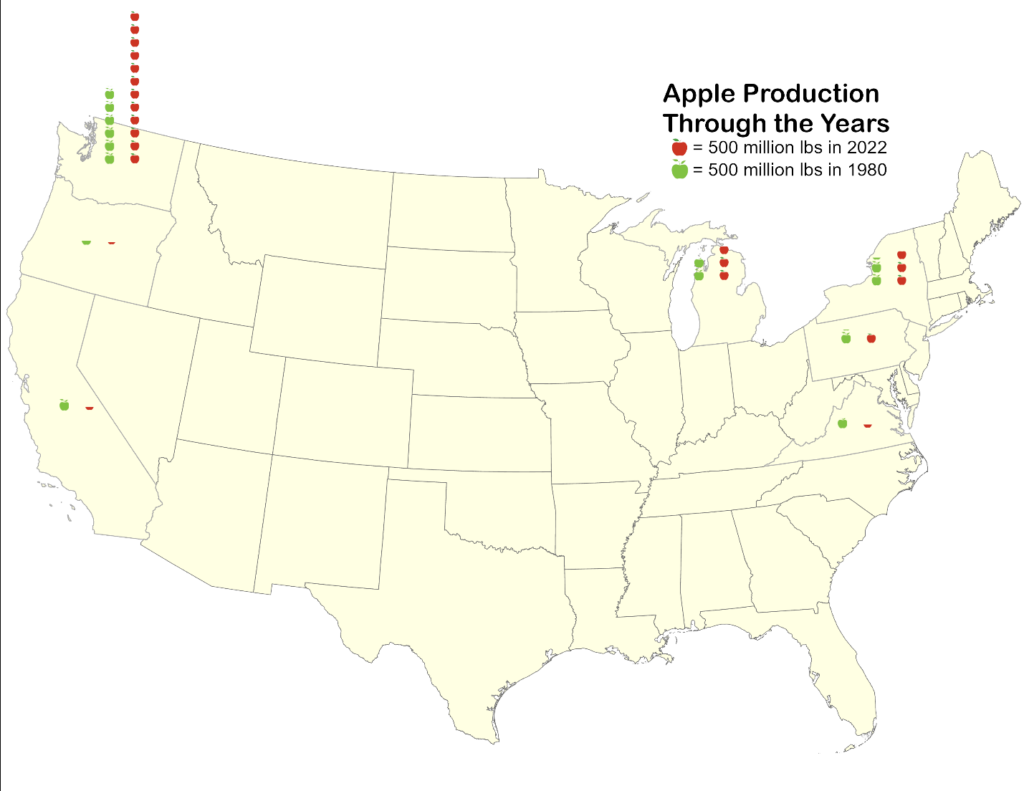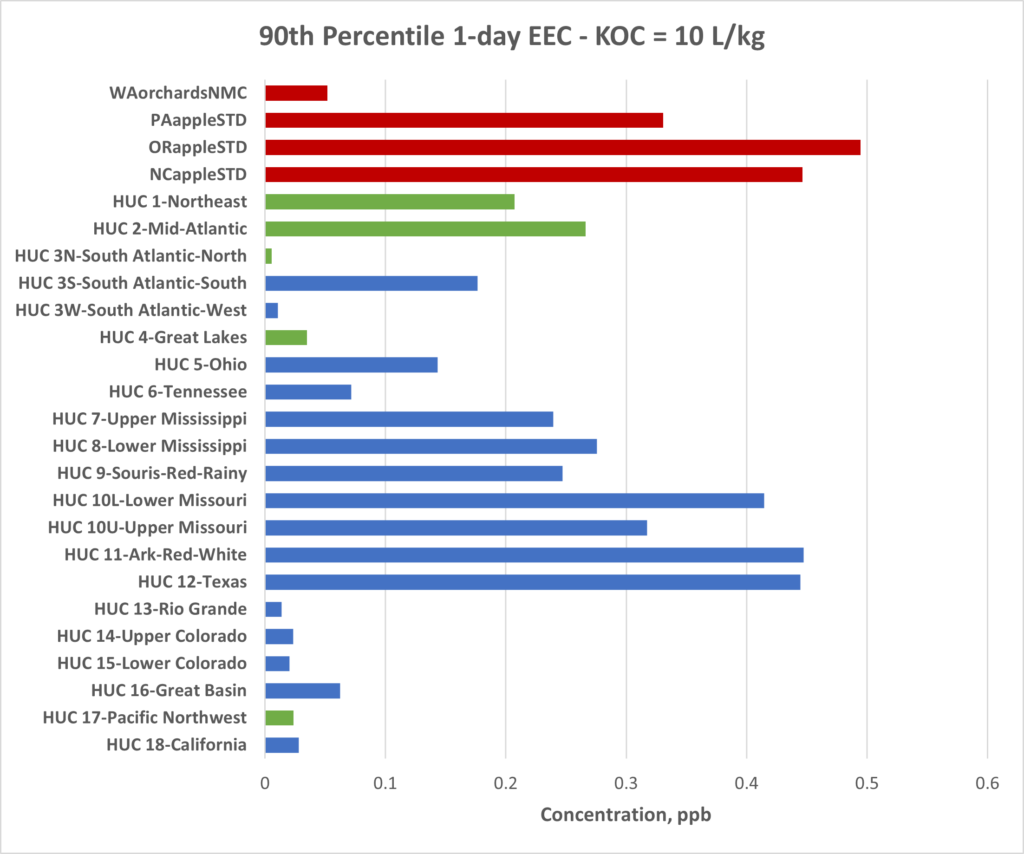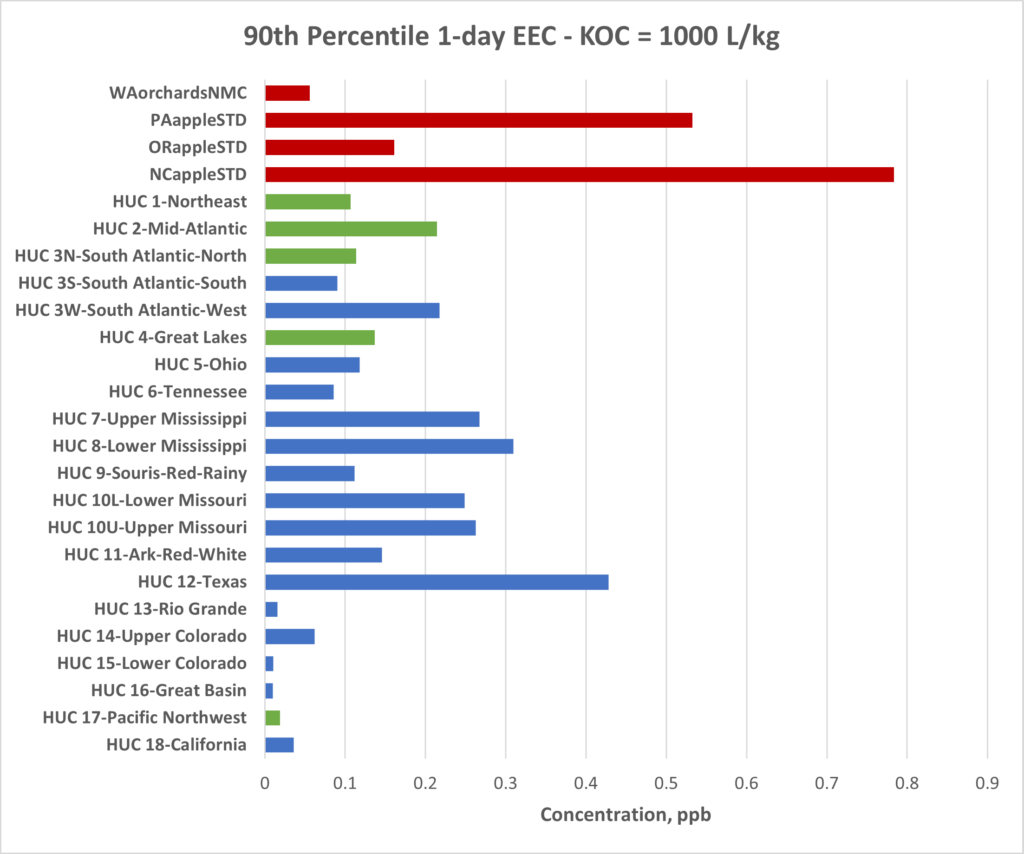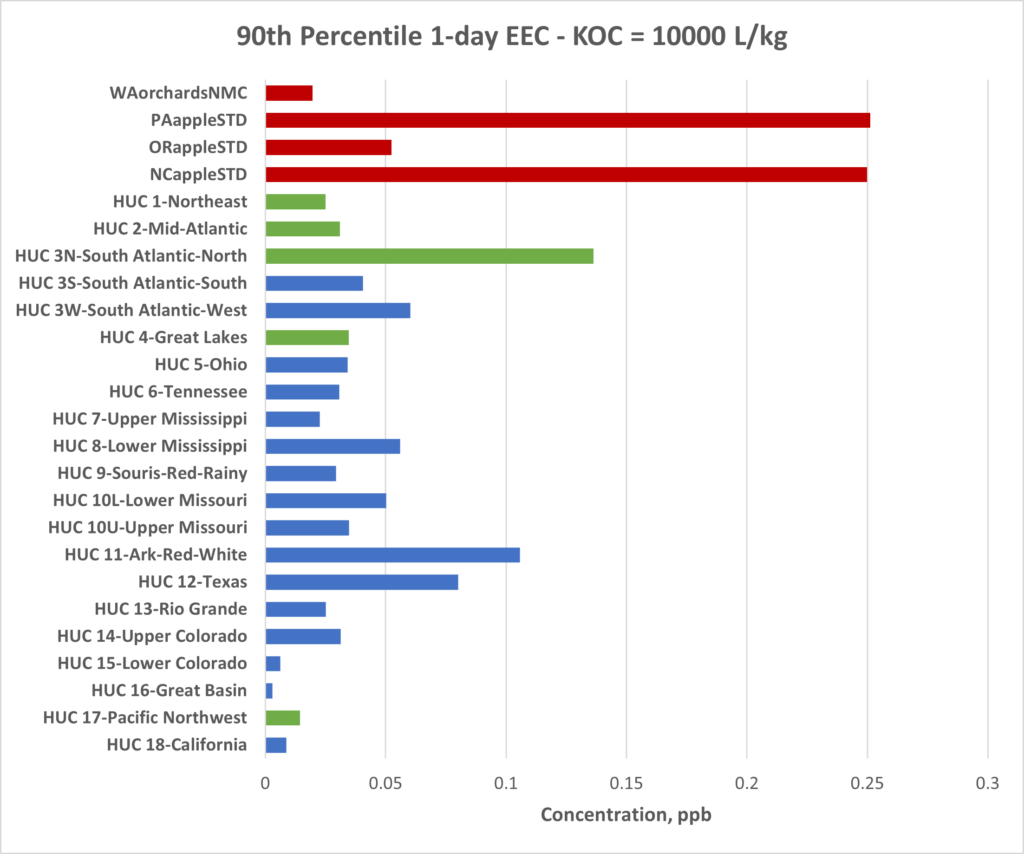
October is National Apple Month
Apples, our official National Fruit, are the the quintessential American staple harkening visions of pies and cider. Today, they are the the second most popular fruit in the United States, just behind bananas. As we prepare to celebrate Halloween and all things Fall, we can’t forget that October is National Apple Month.
 Despite their popularity, apples and their hundreds of millions of pounds of annual production are still held to US EPA standards when it comes to pesticides registered for use on apple orchards. There are seven states in the US that dominate apple production: Washington (where 60% of the country’s apple supply is grown), Oregon, California, Michigan, New York, Pennsylvania, and Virgina. This map shows apple production in US in 1980 and 2020.
Despite their popularity, apples and their hundreds of millions of pounds of annual production are still held to US EPA standards when it comes to pesticides registered for use on apple orchards. There are seven states in the US that dominate apple production: Washington (where 60% of the country’s apple supply is grown), Oregon, California, Michigan, New York, Pennsylvania, and Virgina. This map shows apple production in US in 1980 and 2020.
It can take decades, and countless pollinators to bring us our apple pies. Trees can take 3-6 years to grow from greenhouse seedling to apple-producing maturity, and the many new species that grace our grocery store’s produce counters are decades in the making. Between April and May of each year, the trees are, literally abuzz with pollinators, followed by peak harvest between August and October. The result? delicious, crisp and sweet apples that range from the most popular, Gala, to the harder to find, Mutsu. In honor of our National Fruit, we took a look at ecological PWC scenarios associated with apple production.
US EPA recently (April 2023) changed the ecological PWC scenarios to be the same scenarios as drinking water which are HUC-2 Region based and include different scenarios for three Koc ranges. Prior to the adoption of the drinking water scenarios, there were four apple scenarios used by US EPA for ecological exposure estimates: PAappleSTD, NCappleSTD, ORappleSTD, and WAorchardsNMC. With the recent changes, there are 21 HUC-2 ecological orchard deciduous scenarios. To see the comparison of the original scenarios with the new scenarios, PWC simulations were made with three Kocs (10, 1000, 10000 l/kg) using half-lives of 100 days for aerobic soil, aerobic aquatic metabolism, and anaerobic metabolism. One application 30 days after emergence was modeled with 100 percent efficiency and no drift.
Graphs show the comparison of the 90th percentile 1-day estimated environmental concentrations (EECs) from the four original apple scenarios and the new HUC-2 based orchard deciduous scenarios. The original scenarios are in red, the new HUC-2 scenarios that match the states of the original locations are in green, the remainder of the HUC-2 scenarios are shown in blue. When the original scenarios are compared to the new scenarios, some of the original scenarios were higher than the new scenarios (OR apples for KOC=10 kg/L, NC and PA apples for KOC=1000 and 10000 L/kg). Therefore, for this particular set of environmental fate and application, the new scenarios predict lower 90th percentile EECs than the highest original apple scenario.




Waterborne Environmental, Inc. Hired to Create Online Dashboard That Tracks Nutrient Loss Across the State of Missouri
READ MORE

Swimming with Bacteria: Water Quality Concerns at the 2024 Paris Olympics
READ MORE

The Right Tool – Multidimensional Models
READ MORE



